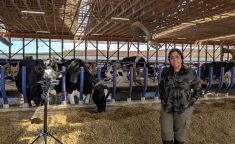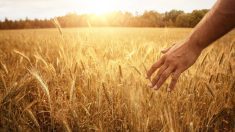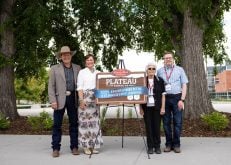Bigger, more valuable, and older.
Those are key words emerging from the latest Census of Agriculture.
The broad strokes from the 2021 census confirm trends that are well known: Farms are consolidating and getting bigger, land and other assets are worth more, revenues and expenses are both going up, and the high cost of getting into farming means there are fewer young farmers.
But it can nevertheless be startling when you see the numbers put on those trends.
Take, for example, farm revenue.
“Farms reporting at least $2 million in sales accounted for 51.5 per cent of total farm operating revenues. This compared with 41.5 per cent in 2016,” said StatCan’s first big release of data from the 2021 farm census.
And how many farms are that big?
Just 7,746 — or barely four per cent of the nation’s 189,874 official farms. (A definition now based on whether the operation “reports revenues or expenses for tax purposes.” Prior to 2021, producing at least one “agricultural product” was the yardstick.)
In Alberta, there were 41,505 farms in 2021 (slightly over one in five of the national total). Of those, 1,651 fell into the Mr. Big category (sales of $2 million or more) and that was also just over one in five.
A few more grey hairs
“The median age of farm operators rose by 2.0 years from the previous census, reaching 58.0 years in 2021,” StatCan’s report states.
Median means half are older and half younger (although the average age, 56 years old, isn’t much different). That compares to a median age in Canada as a whole of 41.6 years.
Moreover, the median age nationally is only up a few months compared to five years earlier, which means the average farmer is, in effect, aging faster than the average Canadian.
Put another way, nearly 159,000 farmers in Canada were 55 years or older last year and fewer than 23,000 were under the age of 35. (And of those youngsters, fewer than 10,000 had their own farm — the rest were on farms with two or more operators.)
However, unlike the rest of the country, the number of younger farmers in Alberta increased from the previous census to just over 5,100 (up a couple of hundred from five years earlier). That compares to 35,500 Alberta farmers aged 55 or older (and 16,500 between the age of 35 and 55).
Moreover, only 12 per cent of farms reported having a succession plan, although that was up sharply from 8.4 per cent in 2016. StatCan suggested the “challenges associated with the COVID-19 pandemic” may have prompted more farm families to develop a succession plan.
And no, farms aren’t cheap
The total value of the land and buildings on farms soared in the five years between censuses, topping $603 billion last year. That’s up 22.7 per cent from five years earlier (in inflation-adjusted dollars), which means the price tag on those assets rose by more than $110 billion.
And a lot of that wealth is in Wild Rose Country: $161 billion, according to the census.
Zeroing in on just land, the census says the total area farmed in Canada is 154 million acres, with 64 per cent of it owned by the operator. The corresponding figures for Alberta are 49.2 million acres farmed but only 60 per cent owned.
However, the first batch of census data released this month is skimpy when breaking down how many own how much.
Nearly half of the 189,874 official farms are worth less than $1.5 million, which isn’t a lot more than the average house price in Vancouver or Toronto. However, StatCan lumps every farm worth more than $3.5 million into one category. Just over 50,000 farms (a quarter of them in Alberta) fall into that group, and having such a broad category doesn’t give any clues about the value of those 7,746 operations that account for more than half of the country’s farm revenues.
Reams of data
StatCan said that in 2020, the average Canadian farmer incurred 83 cents in expenses for every dollar of revenue (that is, revenues of $87 billion versus expenses of $72.2 billion). Grain and oilseed farms were the most profitable, with an expenses-to-revenues ratio of 0.76, the agency said. Sheep and goat farms had the slimmest profits (expenses ate up 97 cents of every dollar in revenue).
Other census findings include:
- A slight drop in the number of farm operators (262,455 in 2021 or about 9,400 fewer people) but more women operating farms (79,795 in 2021, an increase of about 1,800).
- More producers had off-farm jobs (about 125,000, which is just under half of all farmers and up by 3.8 per cent from the last census).
- More farmers reported using sustainable land practices (such as winter or rotational grazing, winter cover crops, and shelterbelts) and more are growing organic products (three per cent versus 2.2 per cent five years earlier).
- 11.9 per cent of farms reported “some form of renewable energy production” such as solar power (compared to 5.3 per cent in 2016). Other technologies that “became more prominent” in 2020 included automated guidance steering systems (up 28.2 per cent from 2015) and geographic information system mapping (up 58.6 per cent).
- The total greenhouse area increased by nearly a quarter (to 330.5 million square feet in 2021).
- And after falling for two decades, the number of tractors rose slightly in 2021 (to 164,000).
Find out more
If you love data, the census has lots to explore — from the number of mushroom farms (264) and maple sugar taps (nearly 55 million) to virtually all types of livestock (goats outnumber horses and ponies, in case you were wondering). You can find overviews and links to data tables on the agency’s website.
To find tables, scroll down to the link titled ‘Farm and Farm Operator Data.’ Tables can often be customized — for example, by province, commodity and/or year — by clicking on the ‘Add/Remove data’ button just above a given table. (A large portion of the numbers in this story came from using this feature.) — With Glacier FarmMedia files
















